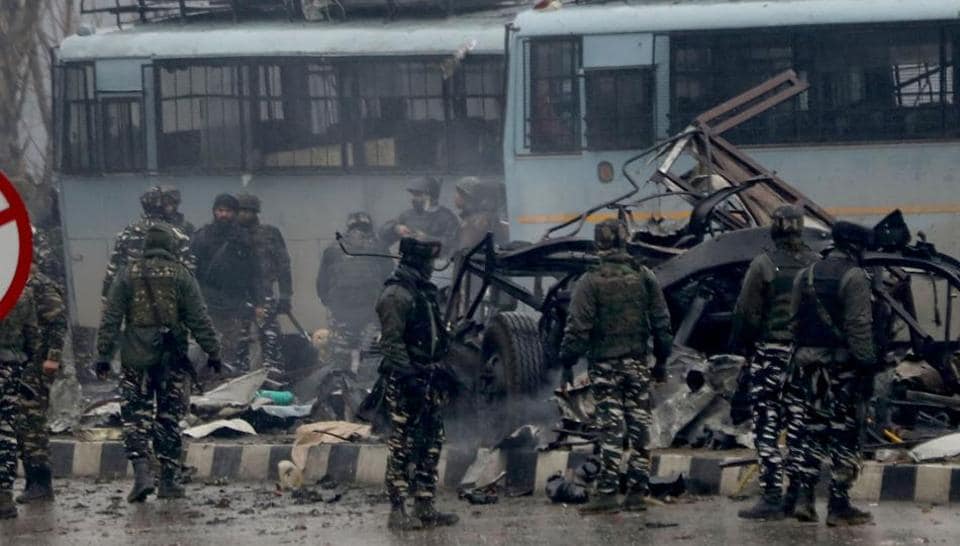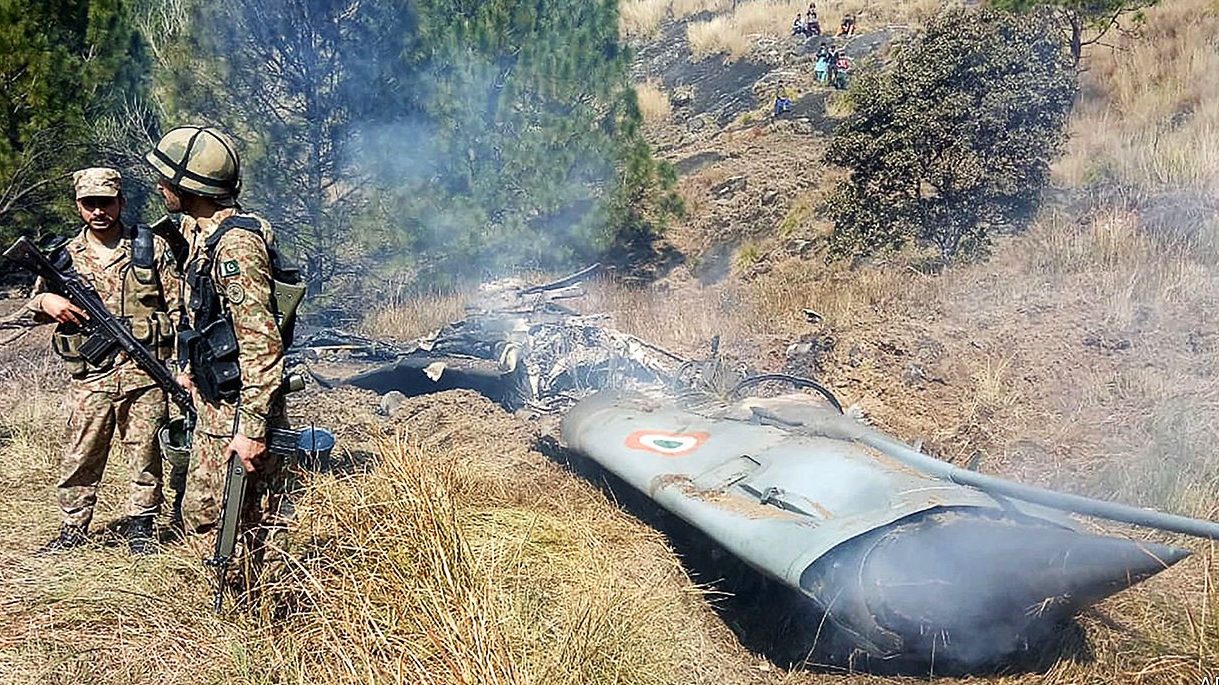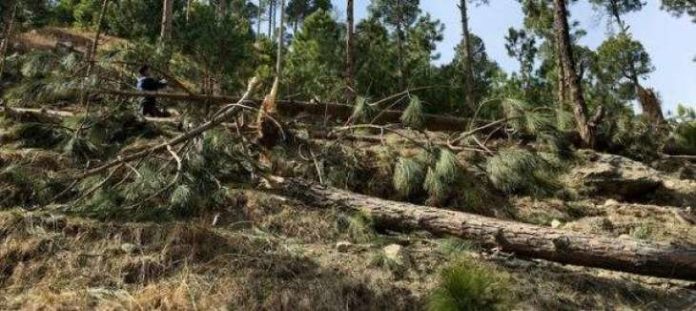Let me clarify at the very outset, I am not privy to the exact strike package the PAF had launched and the tactics employed. These are classified information. My painting of the aerial combat is from open sources and is based on my perception. These do not reflect the official version of the PAF.
Prelude to the Balakot Raid
To better comprehend the logic behind the Indian Air Force pre-dawn Balakot strike on February 27 2019, one has to examine the rationale and domestic impact of the earlier “surgical strike” Modi’s government had allegedly conducted in 2016, following the Uri massacre. The Uri bloodbath had left over 40 Indian soldiers dead and despite clear evidences it was carried out by elements within the Indian Held Kashmir, Modi squarely blamed Pakistan and threatened serious military reprisals.
In the prevalent nuclear environment and with the two adversaries nearly equally matched in a short, sharp conventional military showdown, the options for the Indian defence setup to conduct a retaliatory strike inside Azad Kashmir or elsewhere in Pakistan was rather limited. But some action had to be undertaken to carry out Modi’s orders and appease the Indian public who were by then baying for the Pakistani blood.
On September 29 2016, the Indians triumphantly announced the conduct of a very successful “surgical strike” led by their brave commandos where the raiding party infiltrated deep across the LOC and killed the insurgents there who were from their viewpoint, responsible for the Uri raid. For Pakistan, the announcement came as a complete surprise as on the day mentioned, at best there was a brief LOC skirmish initiated from the Indian side which Pakistan had effectively countered. Two Pakistani soldiers had embraced martyrdom and about half dozen or more Indian combatants were reportedly killed in the process. There were no other civilian or military casualties, was Pakistan’s firm stance and it allowed the media to visit the regions where the Indian military had allegedly carried out their deadly raid. The incident, from their viewpoint, was dismissed out of hand and any retaliatory action was not considered necessary.
On the Indian side, their military projected the strike as a major success while providing at best sketchy details of the raid. When asked by their reporters to display photographs of the slain militants and the destroyed enemy camps, the spokesperson replied that the release of the pictures had been deferred keeping confidentiality in mind and these are still under preparation. In the event no concrete and clear pictorial evidence was provided but the Indian media gave it the necessary spin to project to their public the Modi government had avenged the Uri massacre by punishing Pakistan.
The so-called surgical strike while it did little damaged Pakistan or its military, it boosted Modi’s image within India as a strong leader who had stood up to the Pakistani interference in the Kashmir Valley and had avenged the Uri attack. That Pakistan did not retaliate militarily convinced the Indian defence strategists and planners that limited military actions, real or perceived could be initiated against Pakistan without risking any escalatory response by them, thus averting any nuclear crisis. In the bargain, much political mileage could be extracted by such a process.

The Pulwama attack on 14 February 2019, on the Jammu Srinagar Highway that resulted in the death of 40 Indian security personnel was a major crisis and the government of India had to respond. That the initial reports clearly indicated the involvement of a local Kashmiri youth and absolutely no credible and verifiable evidence of any Pakistani connection was put forward, Modi and the years to come. Saudi Arabia has constantly supported Pakistan on the Issue of Jammu and Kashmir In conclusion, both Pakistan and Saudi Arabia are aware of the importance of each other and have always honoured bilateral relations to be on its peak through thin and thick geopolitical situations.
End Notes
1“Saudi Crown Prince and I share stance against corruption: PM Imran Khan. “Dunya TV (February 18. 2019). Available online at: https://dunyanews.tv/en/pakistan/478904-1-and-saudi-crown-prince-share-stance-on-corruption-PM-Imran-khan-(accessed on February 18, 2019).
2 “Joint Statement between Pakistan and kingdom of Saudi Arabia on the visit of his royal highness crown prince Mohamad bin Salman, Deputy prime minister and minister of defense, to the Islamic Republic of Pakistan-Islamabad (12-13/6/1440H corresponding17-18 February 2019),” Ministry of foreign Affairs, Government of Pakistan. Available online at: https://mofa.gov.pk/pr-detail.php (accessed on February 18,2019).
3 “ You will get more votes than me in Pakistan, PM Imran tells Saudi Crown Prince,” Geo News (February 18,2019), available online at: https://wwwgeotv/latest/228531-you-would-get-more-votes-than-me-in-pakistan-pm-imran-tells-saudi-crown-prince (accessed on February 18, 2019),
4 “Crown prince orders health center to be set up in honor of Farman Ali Khan,” Arab News (February 18, 2019), available online at: http://www.arab-news.com/node/1454346/saudi-arabia (accessed on February 18, 2019).
5 ibid.
6“Saudi crown prince awarded ‘Nishan-e-Pakistan’,” Pakistan Today (February 18, 2019), available online at: https://wwwpakistantodaycornpkJ2019 /02/18/Saudi-crown-prince-awarded-Nishan-e-Pakistan/ (accessed on February 18,2019).
7 “Pakistan and Saudi Arabia ink seven Agreements,” Geo News (February 18,2019). Available online at: https://www.geo.tv/latest/228502-pakistan-and-saudi-arabia-ink-seven-agreements (accessed on February 18, 2019).
8 “Saudi crown prince and I share stance against corruption: PM Imran khan,” Dunya TV (February 18,2019), available online at: https://dunyanews.tv/en/pakistan/478904-I-and-saudi-crown-prince-share-stance-on-coorruption-PM-Imran-khan- (accessed on February 18,2019).
9 “Chinese investment in CPEC will cross $100 billion,” CPEC Info (February 02, 2018), available online at: http://www.cpecinfo.com/news/chinese-investment-in-cpec-will-cross-$-100-bil-lion/NDg1 (accessed on February 18, 2019).
10 “Saudi Crown Prince and I share stance against corruption: PM Imran Khan,” Dunya TV (February 18, 2019), available online at: https://dunyanews.tv/en/Pakistan/478904-1-and-Saudi-Crown-Prince-share-stance-on-corruption-PM-lmran-Khan- (accessed on February 18, 2019).
11Mozaffar Rizvi, “$20billion investment is phase one: Saudi Crown Prince,” Khaleej Times (February 18, online at: available 2019), https://www.khaleejtimes.com/international/pakistan/20-billion-investment-is-phase-I-saudi-crown-prince (accessed on February 18, 2019).
12 “Syed Ali Shah, “China has no objection to Saudi investment in CPEC: Ambassador,” Dawn (October 10, 2018), available online at: https://www.dawn.com/news/1438115 (accessed on February 18, 2019).
13 “Zafar Bhutta, “Russia plans to invest $14b in Pakistan’s energy sector,” The Express Tribune (February 7, 2019), available online at: available online at https://tribune.com.PK/story/1904970/2-russia-plans-invest-14b-pakistan-energy-sector/ (accessed on February 18, 2019).
14 Shafqat Ali, “UAE crown prince delivers $6.2 billion package,” The Nation (January 7, 2019), available online at: https://nation.com.pk/07-Jan-2019/uae-crown-prince-delivers-6-2-billion-package (accessed on February 18, 2019).
15“PM Imran Khan says Pakistan won’t let anyone attack Saudi Arabia,” The News International (September 20, online at: available 2019), https://www.thenews.com.pk/latest/371031-pm-imran-khan-says-pakistan-wont-let-anyone-to-attack-saudiarabia (accessed on February 18, 2019).
16“Joint Statement between Pakistan and Kingdom of Saudi Arabia on the Visit of His Royal Highness Crown Prince Mohamed bin Salman, Deputy Prime Minister and Minister of Defense, to the Islamic Republic of Pakistan-Islamabad (12-13/6/1440H corresponding 17-18 February 2019),” Ministry of Foreign Affairs, Government of Pakistan Available online at: http://mofa.gov.pk/pr-details.php (accessed on February 18, 2019).
17Ibid.
18Ibid.
19“Joint Statement between Pakistan and Kingdom of Saudi Arabia on the Visit of His Royal Highness Crown Prince Mohamed bin Salman, Deputy Prime Minister and Minister of Defense, to the Islamic Republic of Pakistan-Islamabad (12-13/6/1440H corresponding 17-18 February 2019),” Ministry of Foreign Affairs, Government of online at: Pakistan. Available http://mofa.gov.pk/pr-details.php (accessed on February 18, 2019).
201bid.
21Frank Gardner, “Khashoggi murder: What’s next for Mohammad bin Salman,” BBC (November 17, 2018), available at: online https:/fwawbbc.com/news/av/world-middle-east 46246189/Khashoggi murder-what-s-next-for-Mohammed-bin-Salman (accessed on February 18, 2019).

crystal clear declaration. Even before the Balakot bombing, the Pakistani Armed Forces had already prepared a number of well-thought-out contingency plans that were rehearsed and fine-tuned to deal with any situation arising out of an Indian offensive. The responses were supposed to be based on the quid pro quo principle.
On receiving the news about the Balakot bombing, Pakistan reiterated its earlier stance that it will react at the time and place of its choosing. For the political and military leadership of Pakistan, the first task was to conduct an accurate damage assessment of the Indian raid before responding in accordance with its quid pro quo philosophy. The bombing, fortunately, had caused very little damage and might have been overlooked; the blatant violation of the international border, however, could not be condoned. The dilemma for the military planners was how to respond without violating the quid pro quo stance. A decision to lock on to and record genuine military targets across the LOC using the standoff capability of its Air Launched Cruise Missile (ALCM) system with the appropriate airborne platforms but then shifting aim to nearby innocuous sites before firing the weapons was arrived at. The explosions just next to key military installations, it was hoped, would send the message to the adversary the damage the PAF was capable of inflicting but it deliberately refrained from doing so to avoid escalation. From the naval term, it was a “shot across the bow” Would such an action have appeased the Pakistani public who were expecting a more robust response? This must have crossed the minds of the military planners.
The ALCM carrying aircraft with their heavy load needed protection from the enemy interceptors and these were provided by an appropriate number of suitably positioned escort fighters equipped with Beyond Visual Range (BVR) air-to-air missiles. As was hypothesised by the PAF, the approaching raid package was picked up by the IAF air defence network and they launched their flotilla of Mig-21s, Mirage 2000s and Su-30s to intercept the raid. The PAF strike aircraft, using their standoff capability successfully locked on and recorded the genuine targets across the LOC and then shifted aim just prior to weapons release to prevent any human or material losses but near enough for the enemy to hear the blast just next door. This was achieved without crossing the LOC and as the PAF had hoped and expected, the Indian interceptors tried to pursue the attackers and presented themselves within range of the BVR missiles of the PAF escorts. Two Indian interceptors were engaged by the PAF escorts and promptly shot down. The entire PAF strike package returned home triumphant without incurring any losses.
One of the targets to be engaged by the ALCM carrying platforms was an Indian brigade headquarters that was in their crosshair and then spared. With hindsight, we now know the Indian Army Chief was present there when the ALCMs were released. Had the Brigade Headquarters been targeted, it could have resulted in the death of the Indian Army Chief the escalation ladder from then on would have been unimaginable.
What exactly was the Indian strategy, one wonders? Perhaps they were using the upgraded and modified Mig21s (Bison) as baits to lure the PAF strike platforms to within range of the Mirage 2000s and Su-30s that were lurking at the rear. Perhaps they underestimated the capability of the PAF and were taken in by the US propaganda that the SU-30s would upstage the American F-15s and F-16s in aerial combat. Perhaps they did not realise the Americans were deliberately exaggerating the SU-30s capabilities in a bid to scare their government into increasing funding for their F-22 and F-35 programmes. Perhaps the PAF is better trained and over ten years of active combat has battle-hardened their pilots who held their nerve better during the aerial engagement. One can only guess.
The loss of two Indian fighters in the aerial battle with the PAF has been confirmed although India officially has conceded to the loss of a lone Mig-21, whose pilot was captured by Pakistan and duly returned as a goodwill gesture. Unconfirmed reports suggest the second aircraft shot down was an SU-30 and not another Mig-21. Because both the Indian fighters were brought down by BVR missiles, visual confirmation of the type was not possible. One of the Indian TV channels had announced the loss of an SU-30 to the PAF fighters; the breaking news was subsequently withdrawn but not before it went viral on the YouTube. Eye witness reports from across the LOC have also surfaced that talk about the crash of an SU-30 and fatality of two pilots.
The shooting down of the two Indian fighters resolved the PAF dilemma of not doing enough in retaliation. Merely a “shot across the bow” might not have been enough consolation for the Pakistani public but the twin aerial victories were Godsend. The Pakistani public is elated and the PAF has lived up to its reputation. Round one for Pakistan and the PAF and one hopes there is no round two but we must be prepared and as my colleagues suggest keep our powder dry and be prepared for any eventuality.




